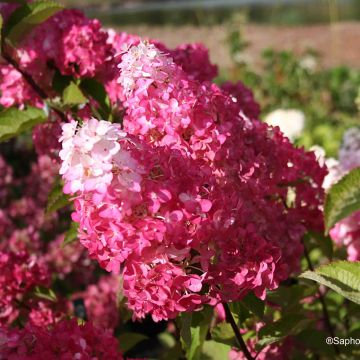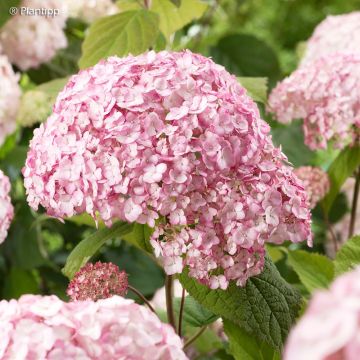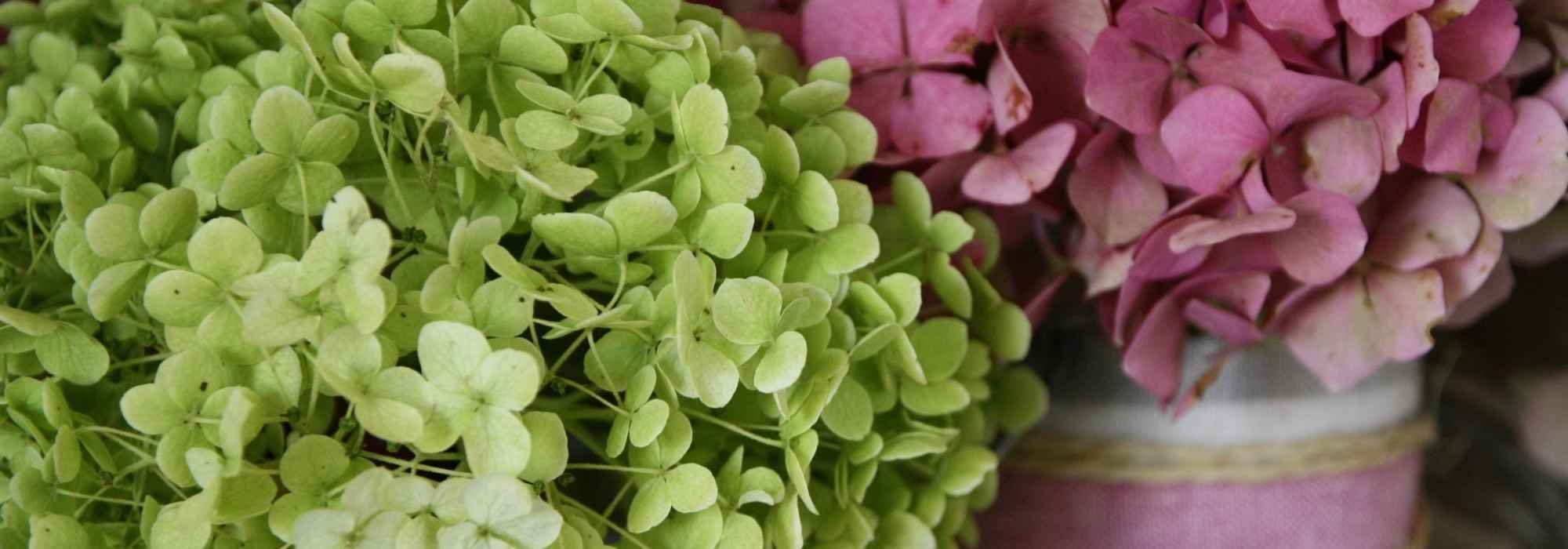

Hydrangea macrophylla Gertrud Glahn
Hydrangea macrophylla Gertrud Glahn
Hydrangea macrophylla Gertrud Glahn
Bigleaf Hydrangea, French Hydrangea
Special offer!
Receive a €20 voucher for any order over €90 (excluding delivery costs, credit notes, and plastic-free options)!
1- Add your favorite plants to your cart.
2- Once you have reached €90, confirm your order (you can even choose the delivery date!).
3- As soon as your order is shipped, you will receive an email containing your voucher code, valid for 3 months (90 days).
Your voucher is unique and can only be used once, for any order with a minimum value of €20, excluding delivery costs.
Can be combined with other current offers, non-divisible and non-refundable.
Home or relay delivery (depending on size and destination)
Schedule delivery date,
and select date in basket
This plant carries a 24 months recovery warranty
More information
We guarantee the quality of our plants for a full growing cycle, and will replace at our expense any plant that fails to recover under normal climatic and planting conditions.
Would this plant suit my garden?
Set up your Plantfit profile →
Description
Hydrangea macrophylla 'Gertrud Glahn' is of German-origin with light pink to light blue flowering, depending on soil pH. It forms a rather compact bush, easy to integrate into a plant bed. Its numerous ball-shaped inflorescences are decorative throughout the summer. Resistant to cold, it should be planted in a semi-shaded position, in neutral to acidic soil. It is easy to cultivate, requiring only an annual pruning in spring and watering in summer to keep the soil moist.
Hydrangea macrophylla is a deciduous bush, native to Japan, where its beauty has been appreciated for centuries and mentioned in poems dating back to the 8th century! Festivals are even dedicated to this bush. It can be found in the wild on the island of Honshu (which is home to the capital Tokyo), and it was introduced to Europe around 1789.
'Gertrud Glahn' is a German variety selected by breeder Friedrich Matthes. Originally from Saxony (born in 1870 in Chemnitz), Matthes introduced new varieties of hydrangeas to the market from 1923 to 1934. His personal specifications were to offer floriferous varieties, with a compact habit, long-lasting flowering, and intense colours.
This is how 'Gertrud Glahn' appeared in 1934, a variety with light pink flowers in neutral soil, and light blue flowers in acidic soil (with lilac-blue nuances in intermediate soils). Compact as desired by its breeder, this small hydrangea measures from 1.2 to 1.5m (4 to 5ft) in all directions. Its growth rate is normal (15 to 50cm (6 to 20in) per year) and its medium to dark green foliage serves as a backdrop to its beautiful flowering. The large flower heads follow one another from June to September, making it one of the best summer-flowering shrubs.
It is not strictly an ericaceous plant, but prefers neutral to acidic soils. A semi-shaded to shaded exposure in warm climates will suit it well, as well as watering in summer, as it does not like drought (of the soil and atmosphere), which can cause its leaves to wilt. Care consists of an annual pruning in spring, before the new leaves emerge. This shrub is very hardy (-20°C (-4°F) or more, although severe frost can damage the tips of the branches. However, they easily regenerate after pruning in spring). Easy to cultivate, it can live for a very long time and adapts well to container gardening.
'Gertrud Glahn' is a good variety for growing in pots or containers, on a balcony or a sun-sheltered terrace in the afternoon. A thick terracotta pot would be well suited. If using a plastic container, choose one with a "double skin", meaning 2 walls separated by an air gap, forming an insulating layer, which prevents the potting soil from overheating and thus the roots in summer, and also slightly limits the effect of frost in winter. Use ericaceous compost adding a bit of compost. Regularly water in hot periods with non-calcareous water (rain water).
In the garden, plant it alongside spring-flowering shrubs so your garden will have flowers throughout the growing season. Choose compact plants to avoid suffocating it. For spring, Camellia japonica will be ideal. The lesser-known Magnolia 'Gold Star', with its yellow star-shaped flowers in April-May, will also be a very good companion for our small hydrangea.
Note: The colour of the flowers of macrophylla hydrangeas varies depending on the soil pH. Traditionally blue varieties turn pink in neutral or alkaline soil. To maintain a beautiful blue colour, mix ericaceous soil with your garden soil and apply aluminium sulphate (slate contains it) or alum stone every spring.
Hydrangea macrophylla Gertrud Glahn in pictures




Plant habit
Flowering
Foliage
Botanical data
Hydrangea
macrophylla
Gertrud Glahn
Hydrangeaceae
Bigleaf Hydrangea, French Hydrangea
Cultivar or hybrid
Other Hydrangeas
View all →Planting and care
Plant in spring or early autumn, preferably in a slightly shaded position, for example against an east-facing wall or even to the north. In very cold regions, it may be prudent to protect the stump with a thick mulch. Keep it protected from cold and drying winds. It does not require ericaceous soil, but appreciates deep, moist, well-drained, fairly fertile soil, possibly enriched with a good base fertiliser before planting. If planting near a wall and the soil is dry at its base, place the root ball at least 30 to 40cm (12 to 16in) away from it and incorporate a quantity of well-decomposed compost to better retain moisture in the soil. Very hardy, it is not afraid to be planted in cold regions.
After planting, be careful of slugs, which are quite fond of young leaves.
Water regularly during hot periods to prevent the foliage from wilting during dry spells.
Planting period
Intended location
Care
Planting & care advice
This item has not been reviewed yet - be the first to leave a review about it.
Haven't found what you were looking for?
Hardiness is the lowest winter temperature a plant can endure without suffering serious damage or even dying. However, hardiness is affected by location (a sheltered area, such as a patio), protection (winter cover) and soil type (hardiness is improved by well-drained soil).

Photo Sharing Terms & Conditions
In order to encourage gardeners to interact and share their experiences, Promesse de fleurs offers various media enabling content to be uploaded onto its Site - in particular via the ‘Photo sharing’ module.
The User agrees to refrain from:
- Posting any content that is illegal, prejudicial, insulting, racist, inciteful to hatred, revisionist, contrary to public decency, that infringes on privacy or on the privacy rights of third parties, in particular the publicity rights of persons and goods, intellectual property rights, or the right to privacy.
- Submitting content on behalf of a third party;
- Impersonate the identity of a third party and/or publish any personal information about a third party;
In general, the User undertakes to refrain from any unethical behaviour.
All Content (in particular text, comments, files, images, photos, videos, creative works, etc.), which may be subject to property or intellectual property rights, image or other private rights, shall remain the property of the User, subject to the limited rights granted by the terms of the licence granted by Promesse de fleurs as stated below. Users are at liberty to publish or not to publish such Content on the Site, notably via the ‘Photo Sharing’ facility, and accept that this Content shall be made public and freely accessible, notably on the Internet.
Users further acknowledge, undertake to have ,and guarantee that they hold all necessary rights and permissions to publish such material on the Site, in particular with regard to the legislation in force pertaining to any privacy, property, intellectual property, image, or contractual rights, or rights of any other nature. By publishing such Content on the Site, Users acknowledge accepting full liability as publishers of the Content within the meaning of the law, and grant Promesse de fleurs, free of charge, an inclusive, worldwide licence for the said Content for the entire duration of its publication, including all reproduction, representation, up/downloading, displaying, performing, transmission, and storage rights.
Users also grant permission for their name to be linked to the Content and accept that this link may not always be made available.
By engaging in posting material, Users consent to their Content becoming automatically accessible on the Internet, in particular on other sites and/or blogs and/or web pages of the Promesse de fleurs site, including in particular social pages and the Promesse de fleurs catalogue.
Users may secure the removal of entrusted content free of charge by issuing a simple request via our contact form.
The flowering period indicated on our website applies to countries and regions located in USDA zone 8 (France, the United Kingdom, Ireland, the Netherlands, etc.)
It will vary according to where you live:
- In zones 9 to 10 (Italy, Spain, Greece, etc.), flowering will occur about 2 to 4 weeks earlier.
- In zones 6 to 7 (Germany, Poland, Slovenia, and lower mountainous regions), flowering will be delayed by 2 to 3 weeks.
- In zone 5 (Central Europe, Scandinavia), blooming will be delayed by 3 to 5 weeks.
In temperate climates, pruning of spring-flowering shrubs (forsythia, spireas, etc.) should be done just after flowering.
Pruning of summer-flowering shrubs (Indian Lilac, Perovskia, etc.) can be done in winter or spring.
In cold regions as well as with frost-sensitive plants, avoid pruning too early when severe frosts may still occur.
The planting period indicated on our website applies to countries and regions located in USDA zone 8 (France, United Kingdom, Ireland, Netherlands).
It will vary according to where you live:
- In Mediterranean zones (Marseille, Madrid, Milan, etc.), autumn and winter are the best planting periods.
- In continental zones (Strasbourg, Munich, Vienna, etc.), delay planting by 2 to 3 weeks in spring and bring it forward by 2 to 4 weeks in autumn.
- In mountainous regions (the Alps, Pyrenees, Carpathians, etc.), it is best to plant in late spring (May-June) or late summer (August-September).
The harvesting period indicated on our website applies to countries and regions in USDA zone 8 (France, England, Ireland, the Netherlands).
In colder areas (Scandinavia, Poland, Austria...) fruit and vegetable harvests are likely to be delayed by 3-4 weeks.
In warmer areas (Italy, Spain, Greece, etc.), harvesting will probably take place earlier, depending on weather conditions.
The sowing periods indicated on our website apply to countries and regions within USDA Zone 8 (France, UK, Ireland, Netherlands).
In colder areas (Scandinavia, Poland, Austria...), delay any outdoor sowing by 3-4 weeks, or sow under glass.
In warmer climes (Italy, Spain, Greece, etc.), bring outdoor sowing forward by a few weeks.



















































